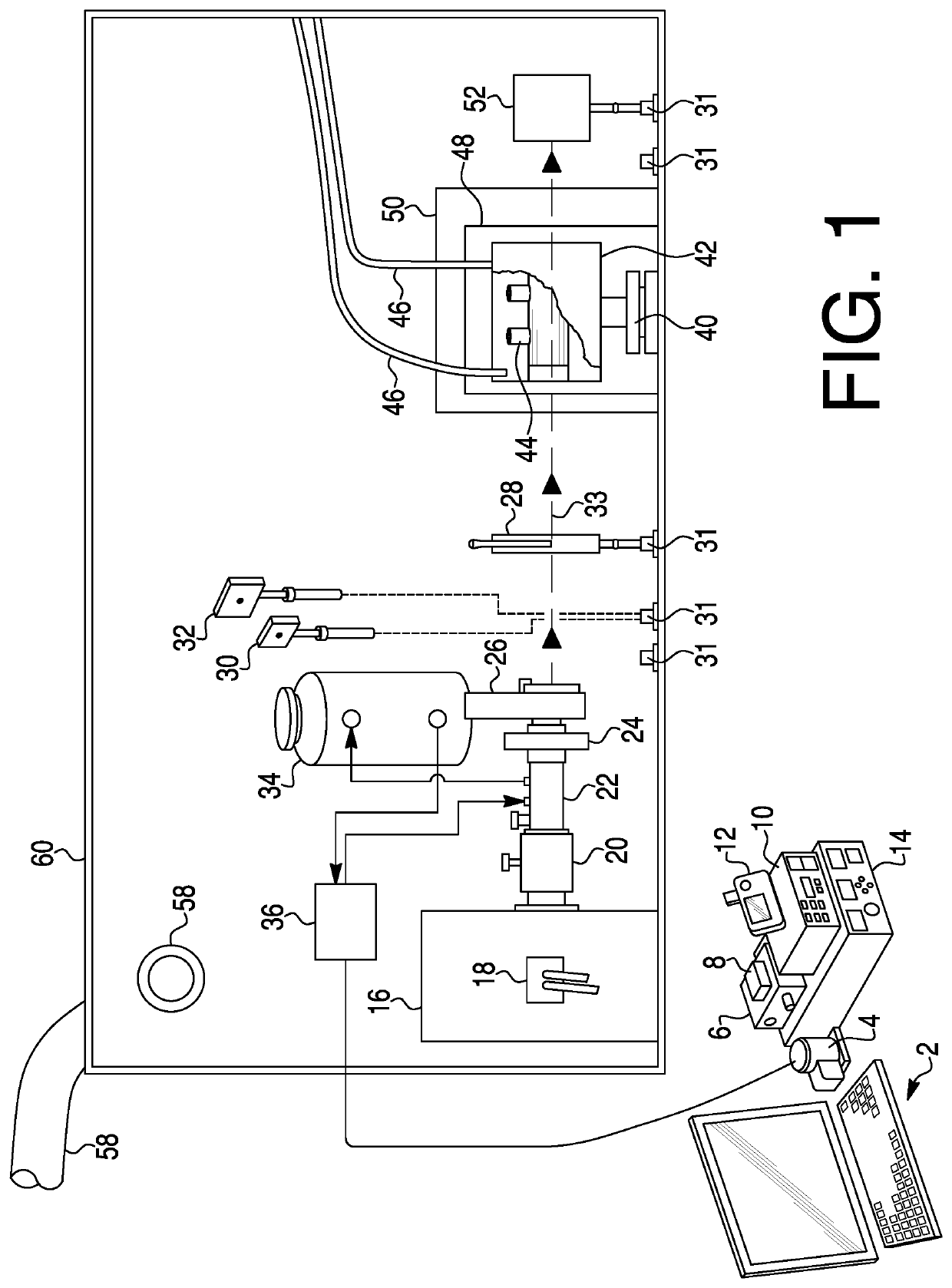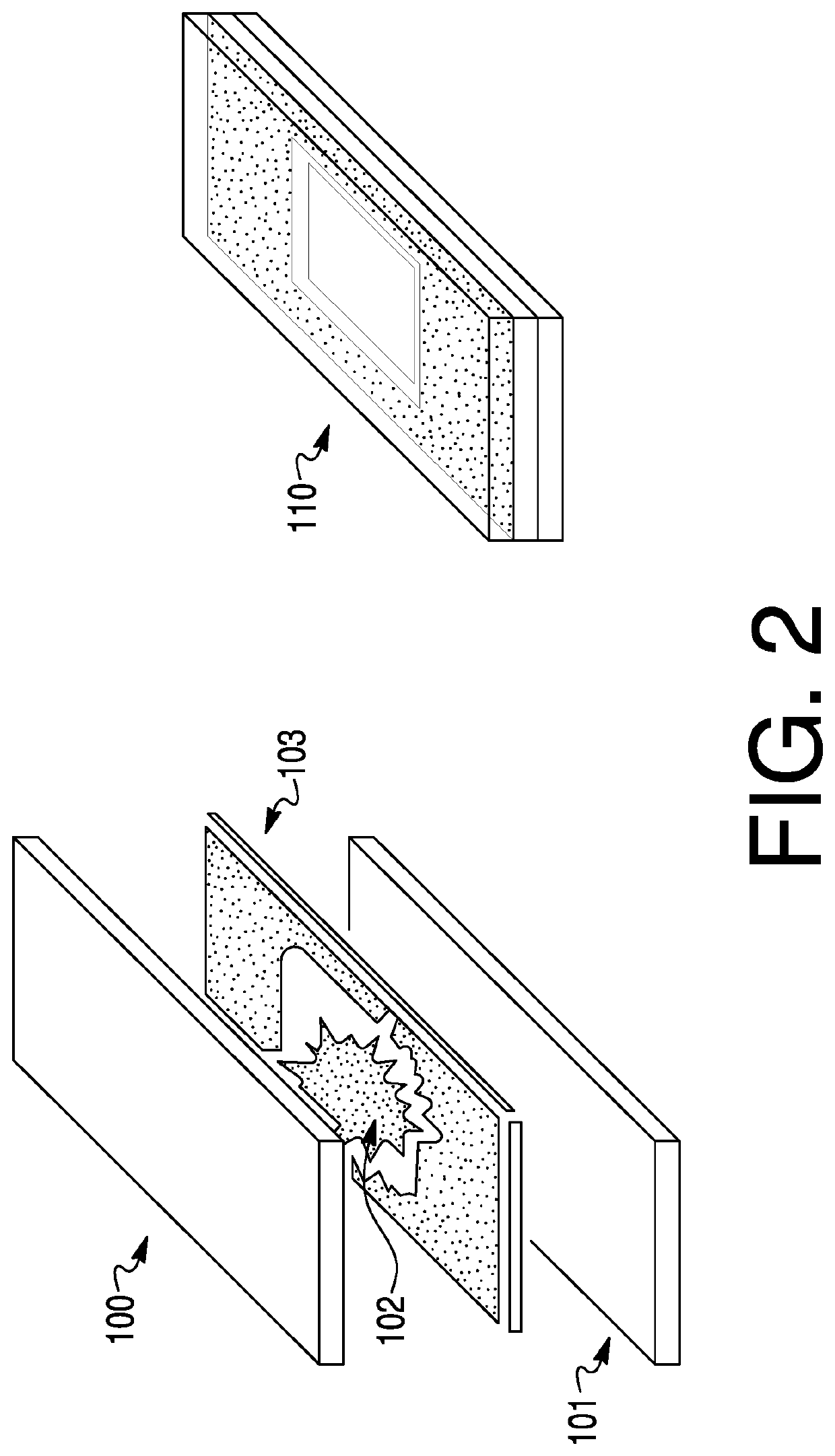Methods for determining photosensitive properties of a material
a technology of photosensitive properties and methods, applied in the field of methods for determining photosens, can solve problems such as difficult replication present evaluation challenges, and inhomogenity in natural products that are difficult to replicate with a simple model system
- Summary
- Abstract
- Description
- Claims
- Application Information
AI Technical Summary
Benefits of technology
Problems solved by technology
Method used
Image
Examples
example 1
[0063]Two skincare cosmetic products were purchased at retail in the United States:[0064]a) L'Occitane Eau d'Immortelle toner product (purchased at L'Occitane store); and[0065]b) Neogen Green Tea foaming face wash (purchased at Sephora).
[0066]These two products were chosen based on their potential for light interaction based on the package appearances, claims, and ingredients. Both products are translucent fluids and could be easily transferred into vials to study the effect of light exposures.
[0067]These products are both packaged in translucent plastic bottles. Neither of these two packages had a secondary carton (e.g., an outer paperboard box) and thus the bottle and closure were the only packaging components providing for light protection in the retail environment.
Laboratory Evaluation of Cosmetic Products
[0068]The products were first assessed to determine if spectral signatures could be monitored. For this evaluation, aliquots of each cosmetic product were transferred into quar...
example 2
[0091]Olive oil (Bertolli) was purchased at retail and stored in a dark cabinet prior to the experiment. The olive oil was evaluated using the instrument described in WO2013 / 162947 by placing the olive oil into the sample cell 44. Temperature was controlled at 20° C. and the olive oil was stirred rigorously throughout the experiment. Packaging samples were cut out of the commercially available olive oil bottles, both PET and glass packaging materials. The packaging sample being tested for light protection was affixed to the sample holder 28 and placed in the sample test position 31 between the test cell and the exposure lamp.
[0092]UV / Vis absorbance spectra of the olive oil were collected once a minute for 40 to 90 minutes. Photosensitivity of the product was identified in a peak at 670 nm and was tracked to determine the rate of decay. The degradation of the species at 670 nm followed pseudo-first order kinetics and the data fit to a pseudo-first order reaction model with a rate con...
example 3
[0098]Commercially available cosmetic creams were purchased from retail stores for evaluation to determine their light sensitivity. For evaluation in the light exposure device described in WO2013 / 163421, as shown in FIG. 2, cosmetic creams 102 were spread onto a glass slide 101 fitted with a neoprene gasket 103, then a second glass slide 100 is placed over the cream 102 and the assembly is taped together to form a sealed chamber of cream with a smooth surface. Two sample assemblies were made, one to be exposed to light (referred to as the “light” sample) and one to be kept in the dark (“dark” sample). Both assemblies are then loaded on the sample holder 28, with the dark sample being positioned behind the light sample and a piece of aluminum foil. This protocol ensures that the samples do not significantly dry during the experiment, and that the dark sample is subjected to the same conditions (i.e. handling, temperature) as the light sample, with the exception of light exposure. The...
PUM
| Property | Measurement | Unit |
|---|---|---|
| temperature | aaaaa | aaaaa |
| temperature | aaaaa | aaaaa |
| wavelength | aaaaa | aaaaa |
Abstract
Description
Claims
Application Information
 Login to View More
Login to View More - R&D
- Intellectual Property
- Life Sciences
- Materials
- Tech Scout
- Unparalleled Data Quality
- Higher Quality Content
- 60% Fewer Hallucinations
Browse by: Latest US Patents, China's latest patents, Technical Efficacy Thesaurus, Application Domain, Technology Topic, Popular Technical Reports.
© 2025 PatSnap. All rights reserved.Legal|Privacy policy|Modern Slavery Act Transparency Statement|Sitemap|About US| Contact US: help@patsnap.com


